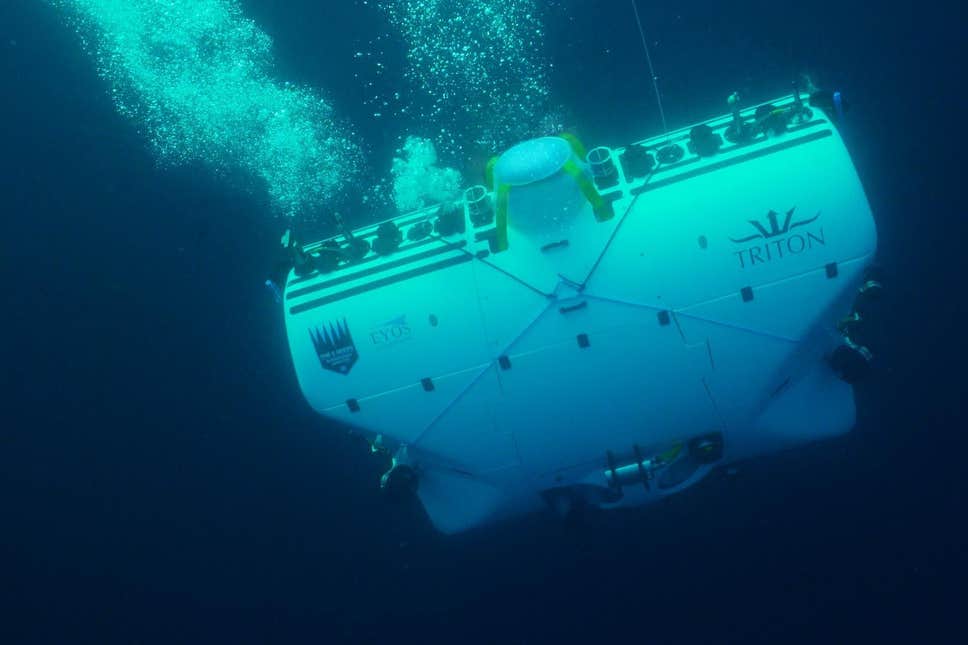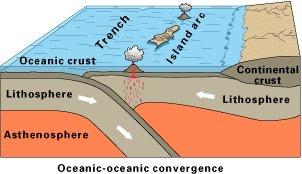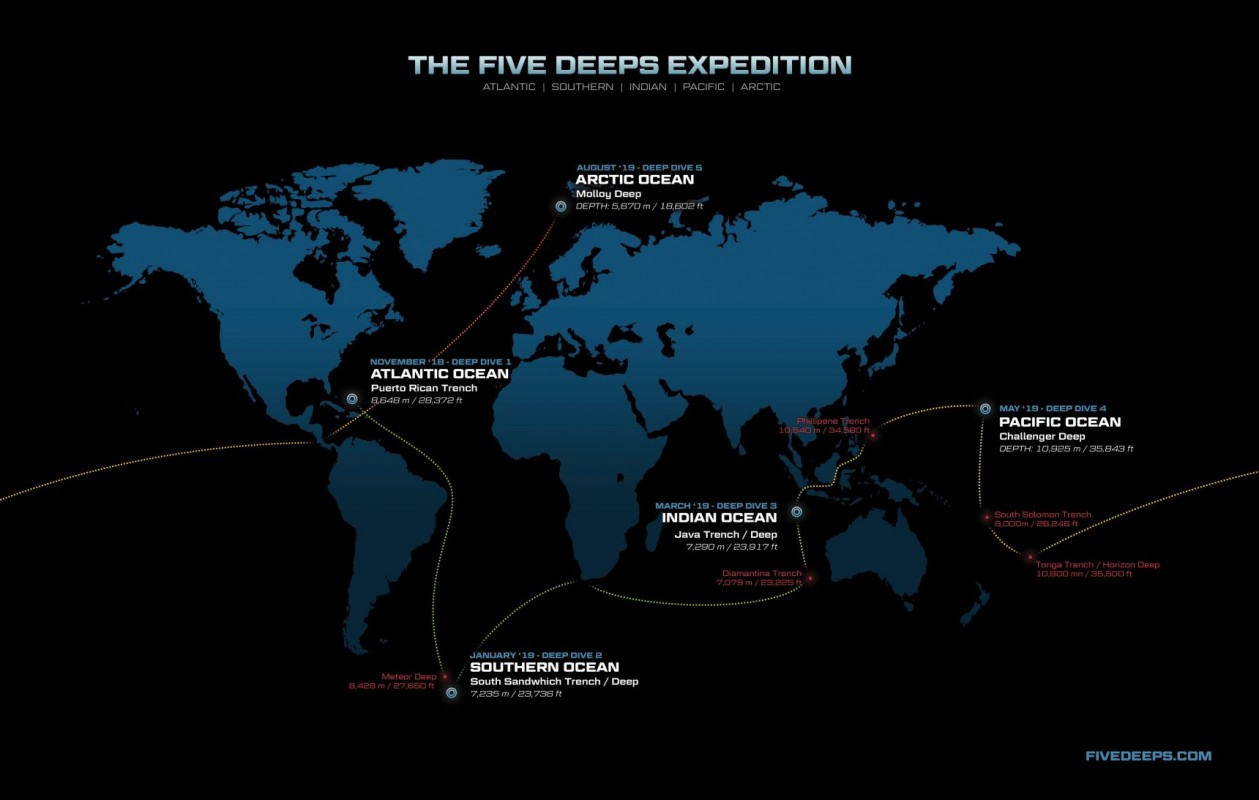 On August 24th, Victor Vescovo and his team became the first people to reach the deepest point of all the oceans on Earth.
On August 24th, Victor Vescovo and his team became the first people to reach the deepest point of all the oceans on Earth.
The voyage, named the “Five Deeps Expedition,” came to a close after Vescovo’s journey to the bottom of Molloy Trench in the Arctic Ocean.
Vescovo is a former American naval explorer and an undersea explorer. Vescovo believes that pushing ourselves to the limit is the way humans evolve. He has climbed the highest mountains on each of the continents as well as skied to the North and South poles.
What Are Trenches?
Oceanic trenches are steep depressions in the deepest part of the ocean. Trenches are narrow, but they are also very long.
 Oceanic trenches are formed by subduction. As you know, our Earth's crust is made up of tectonic plates. When there are two tectonic plates, the less buoyant plate will fall beneath the other plate causing subduction. The slope on the side of the more buoyant plate is steeper than the slope formed by the subducted plate. This causes the trench to be asymmetrical.
Oceanic trenches are formed by subduction. As you know, our Earth's crust is made up of tectonic plates. When there are two tectonic plates, the less buoyant plate will fall beneath the other plate causing subduction. The slope on the side of the more buoyant plate is steeper than the slope formed by the subducted plate. This causes the trench to be asymmetrical.
The water pressure in oceanic trenches is 1,000 times more than the surface of the ocean. The temperature is almost freezing, and there is no sunlight present. Despite these extreme conditions, there are still some species that can survive in this habitat.
Most organisms living in oceanic trenches are made of water and gelatinous material similar to jellyfish. These organisms do not have bones or organs such as lungs which allows them to survive in a habitat with extreme water pressure.
Studies have uncovered that there are also some organisms with special proteins to resist high pressure. Other organisms live on the organic material that sinks to the trenches from the surface of the ocean. There are also types of fish that use bioluminescence to produce their own light. This can be helpful as they can attract prey easily.
A source of food in deep trenches is chemosynthesis. In this process, producers, like bacteria, convert chemical compounds into organic compounds.
Five Deeps Expedition
 Vescovo and his crew marked history in more than one way. His dive into the Mariana Trench in the Pacific Ocean was the deepest man has ever dived, at 10,927 meters. The only other person to have ventured into the Mariana Trench was James Cameron on Challenger Deep in 2012.
Vescovo and his crew marked history in more than one way. His dive into the Mariana Trench in the Pacific Ocean was the deepest man has ever dived, at 10,927 meters. The only other person to have ventured into the Mariana Trench was James Cameron on Challenger Deep in 2012.
Vescovo las also explored the Java Trench in the Indian Ocean, the South Sandwich Trench in the Southern Ocean, and the Puerto Rico Trench in the Atlantic Ocean. Vescovo's trip to the Molloy Trench was the first time man has ever touched the bottom of the trench. They also discovered about 40 different species that mankind has never encountered before!
In the Puerto Rico Trench, Vescovo observed that seagrasses that get torn during hurricanes sink to the bottom and become food for tiny organisms, thereby becoming an important sink for carbon.
Even though many humans have been to these trenches, unfortunately, Vescovo and his team found plastic, such as candy wrappers, at the bottom of many trenches.
Sources: BBC, CNN, National Geographic, Woods Hole Oceanographic Institution, Popular Science







